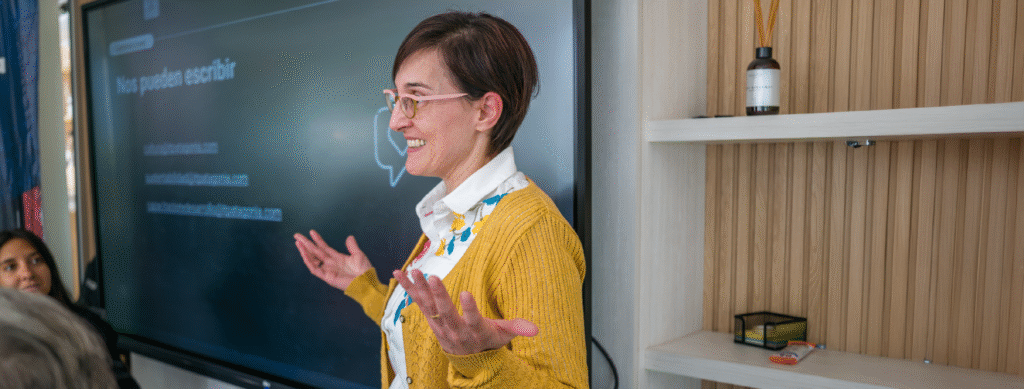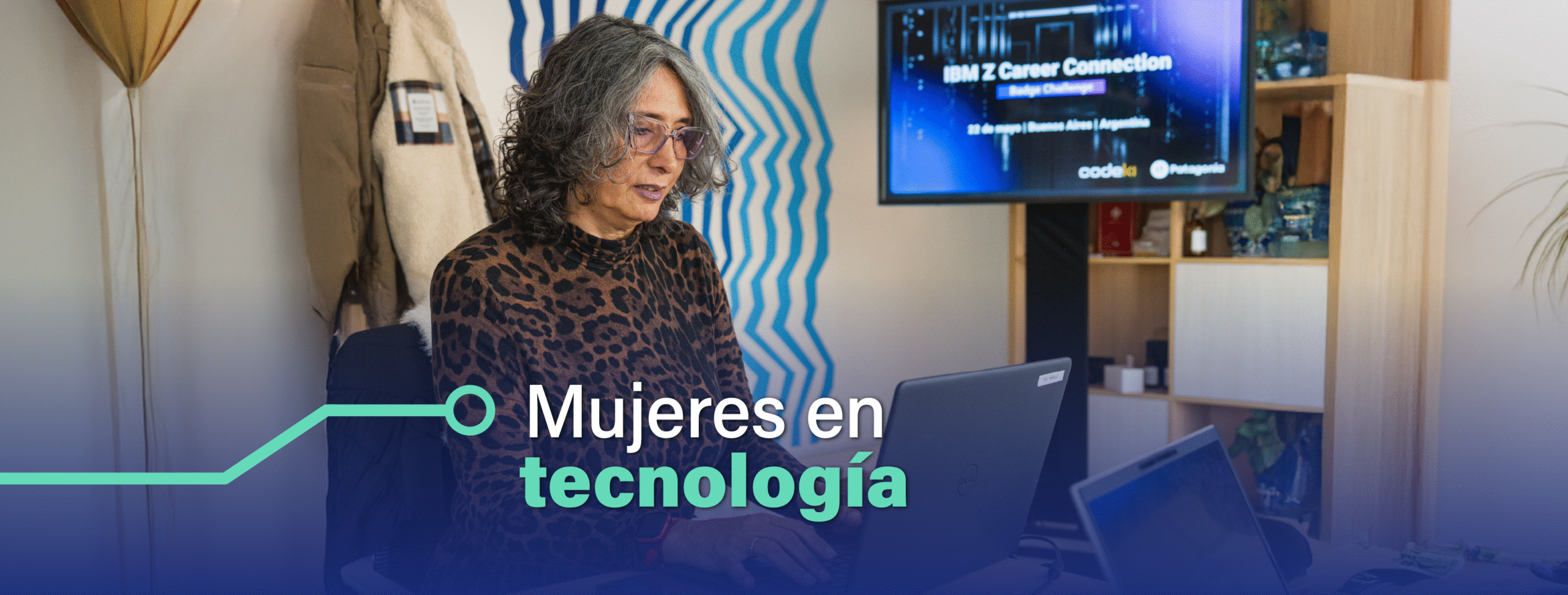Gender gap in technology: a challenge the industry still needs to solve
The technology industry is one of the drivers of economic development and innovation globally. However, it continues to face a historical debt: the low participation of women.
On average, Only 91% of senior IT positions are held by women in Latin America..
At the country level, the percentages of female participation revealed in the report vary, but in all cases they are low or very low: Chile, Peru, and Ecuador, 7%; Colombia, 12%; and Argentina, 32%.
For the STEM roles (Science, technology, engineering and mathematics) the presence of women is from 16%.
This suggests that gender stereotypes continue to influence career choices in technology.
From this context, it is important to understand that the gender gap in technology not only limits opportunities for millions of women. It also It hinders the creative and productive potential of a sector that needs diversity to innovate..
In this article, we analyze the structural and cultural causes of the gender gap in technology, along with the challenges posed by implementing inclusive policies in the IT industry.
We also discuss the benefits of an inclusive culture and share some initiatives that are making a difference.
What do we mean by the gender gap in technology?
The gender gap in technology manifests itself at different levels:
- Less female presence in STEM careers (science, technology, engineering and mathematics).
- Low representation in technical or leadership positions.
- Wage differences.
- Lack of effective inclusion policies in many companies.
According to UNESCO data, Only 29.31% of female researchers worldwide are women..
In Argentina, Adecco's “Global Workforce of the Future” report, reveals that women occupy less than 20% of positions in advanced technology companies.

Structural and cultural causes of the gender gap in technology
The gender gap in the tech sector has deep roots.
Some of the most common factors that generate it are:
- Gender stereotypesFrom childhood, girls are less encouraged to explore scientific or technical disciplines. Technology is still perceived as a "male domain."
- Lack of role modelsThe low visibility of women leaders in technology limits the aspirations of new generations.
- Non-inclusive work environmentsUnconscious biases, discrimination, harassment, and a lack of work-life balance policies create barriers to women's career progression and development.
- Difficulties in accessing training opportunitiesIn many contexts, especially in developing countries, women have less access to quality digital or technological education.

Challenges of implementing an inclusive policy in technological environments
One of the main challenges experienced in the implementation framework of DEI policies is breaking with traditional stereotypes in the sector, where certain areas continue to be perceived as dominated by a homogeneous profile.
For Florence Tatasciore, Diversity, Equity and Inclusion Specialist on our team, “A key learning we developed in the process is the importance of training and constant communication to Deconstruct stigmas, overcome prejudices, and generate a change in mentality throughout the organization.”.
“It is also essential to have the commitment of senior management and the leadership team, who must be a role model and promoter of inclusion and equity in their teams,” he says.
How is the tech industry responding to DEI efforts?
The tech industry has begun to recognize the importance of diversity, equity and inclusion, but there is still a long way to go.
Barriers to inclusion are a reflection of society's cultural and structural problems. These obstacles make changes complex and require sustained effort.
To generate real change in the sector, it is essential that companies work collaboratively and share best practices, learnings, and resources to accelerate the transformation.
This effort involves developing strategic alliances, promoting coordination with the public sector and social organizations, and promoting spaces for discussion to address common challenges.
Only through collaborative work can we build a truly inclusive technology ecosystem that helps narrow the gender gap in technology, where everyone has equal opportunities to grow and contribute.
Why closing the gap matters?
Diversity is not just a matter of social justice: it is also a competitive advantage.
Studies of the McKinsey Global Institute indicate that gender equality at work could contribute up to $12 trillion to global GDP by 2025.
Besides:
- Diverse teams create better products by incorporating multiple perspectives and experiences.
- Female leaders tend to foster more collaborative and inclusive cultures.
- Greater female participation in technology allows for the design of solutions that are more representative of the real needs of society as a whole.
As explained by the United Nations, Gender equality in the sciences is crucial to building a better future for all people..
However, women and girls continue to face systemic barriers and prejudices when pursuing scientific careers.
Closing the gender gap in technology and science requires breaking down stereotypes, promoting role models that inspire girls, and supporting the advancement of women through targeted programs.
Likewise, this process requires fostering inclusive environments through policies and measures that promote inclusion, diversity, and equity.

Benefits of an inclusive culture
Among the advantages of diversity are greater psychological security, greater openness to learning, and opportunities for development without prejudice.
That's why at IT Patagonia we have specific programs to reinforce these values, which include training and awareness in the five axes that guide our agenda of Diversity, Equity and Inclusion (DEI):
- Multicultural and ethnic diversity.
- Age diversity.
- Functional Diversity (disability and neurodiversity).
- Gender diversity and sexual orientation
- Economic vulnerability.
In addition, we have specific policies and a DEI Guide, which consists of an internal toolbox on diversity, equity and inclusion.
This resource allows us to highlight key concepts for the development and strengthening of an inclusive culture.
Initiatives that are making a difference
Despite the challenges, more and more organizations, governments, and communities are taking concrete actions to reduce the gap. These include:
- Women's mentoring and leadership programs, such as Technovation Girls either Women Who Code.
- Equal pay and equitable parental leave policies.
- Educational initiatives for girls and young women, such as workshops on programming, robotics, and computational thinking. For example: Girls Who Code either Girls in Technology.
- Awareness campaigns to highlight women leaders in technology, such as International Day of Women and Girls in Science.
In IT Patagonia we promote inclusive leadership through training and awareness-raising, both general and technical, in the different areas that make up the DEI agenda.
We also work together with strategic areas, such as Culture and Training, to ensure that Our leadership team is aligned with the values of inclusion and equity.
In this way, we strengthen our commitment to diversity, equity, and inclusion from the foundation of organizational leadership.
The differential vision of IT Patagonia
Our vision in terms of DEI is Building an inclusive and equitable organizational culture, where each person can feel valued. In addition, we want to ensure that full support is given to their development.
We are therefore committed to reflecting the diversity of society in our work environment, not only in terms of gender, but also sexual orientation, age, origin, abilities, among other issues.
This vision sets us apart, as it places the DEI perspective as an essential and cross-cutting value in all the technological innovation projects we carry out, where we promote equal opportunities and respect for differences.

From an intersectional perspective, we recognize that each person has a complex identity and multiple dimensions of experience. From there, we can Addressing inclusion challenges with a comprehensive vision.
This means that we consider the different intersections of identity when designing our policies, ensuring that people who work at the company have the opportunity to thrive, regardless of the multiple realities they may be living and experiencing.
It is an approach that sets us apart in the industry by fostering a culture that goes beyond mere representation, seeking genuine and sustained equity at every stage of professional development.
A change that requires commitment
Closing the gender gap in technology requires more than good intentions. It requires a active and sustained commitment by all stakeholders: governments, businesses, educational institutions and civil society.
Embracing inclusion isn't just the right thing to do, it's the smart thing to do. Because the future of technology must be diverse, inclusive, and with equal opportunities for all.
If you are interested learn more about our approach to inclusion, we invite you to contact us.

